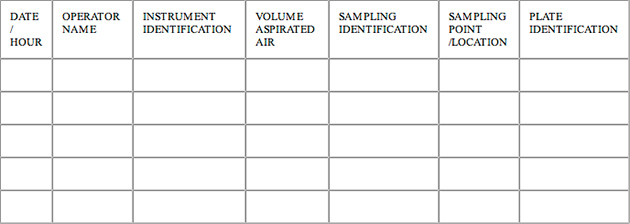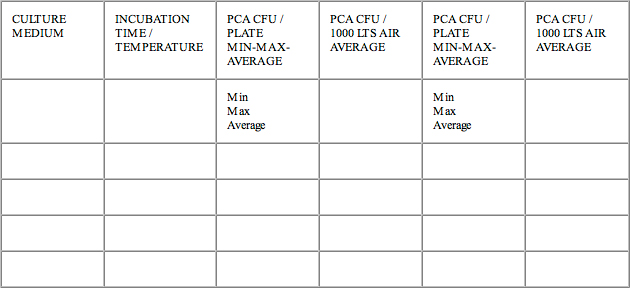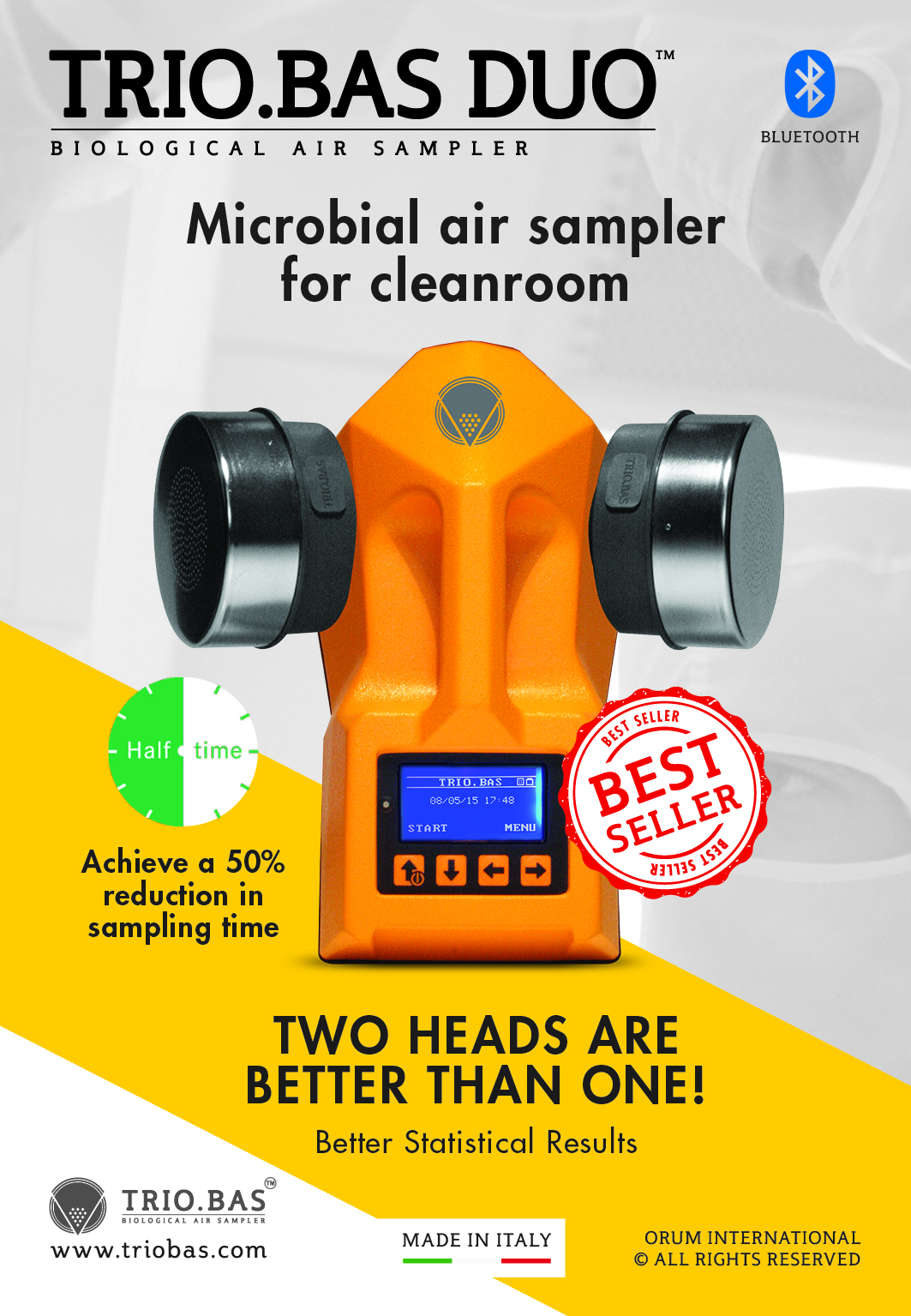Application Note – Bioaerosol N.24 – Record of results.

The dispersion and diffusion of micro-organisms in indoor air is very irregular and influenced by several factors like the presence of air currents, number of people present in the environment, movement of people in the area, electrostatic charges, humidity, temperature, etc.
It is clear the correct sampling technique is important. It is imperative to make several tests in the same place, at same time to produce a statistical result that takes an accurate picture of the microbiological conditions of the considered environment.
To obtain a statistical result, it is imperative to have a correct record of all data of the sampling cycles.
The material
The portable microbiological impaction air sampler should be reliable, calibrated, fully charged and suitable to produce twin contemporaneous samples.
The sampler should be positioned in defined and programmed places (e .g.: 1 metre high, 1 metre from the wall, close to the air conditioning outlet, etc.) using the support or tripod.
The aspirating head at the beginning of the sampling cycle must be sterile (e. g.: metal autoclaved or sterile plastic).
The Contact plate (RODAC) or the Petri dish with agar media should be freshly prepared and with the correct amount of medium to guarantee a regular growth of the micro-organisms.
The operators should be very well trained about the sampling techniques and equipped with disposable gloves, and sterile spray disinfectants.
A specific Standard Operating Procedure (SOP) for the sampling protocol should be available for all the staff involved in the sampling activity.
Record of the sampling data
All data of the sampling cycles should be registered on a specific form to be sure the next results are correctly compared for interpretation and discussion.
Example of registration form for indoor air sampling cycle

It is useful for a correct interpretation, to note all the available information like:
(a) the total number of people present in the area (or no people present in the area)
(b) if the sampling was performed “at rest” or “in operation”
(c) the temperature of the environment
(d) the humidity of the environment
(e) the type of HVAC
(f) a map with all the sampling points


















